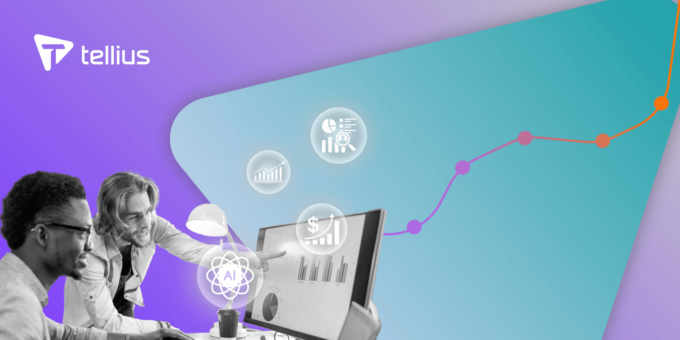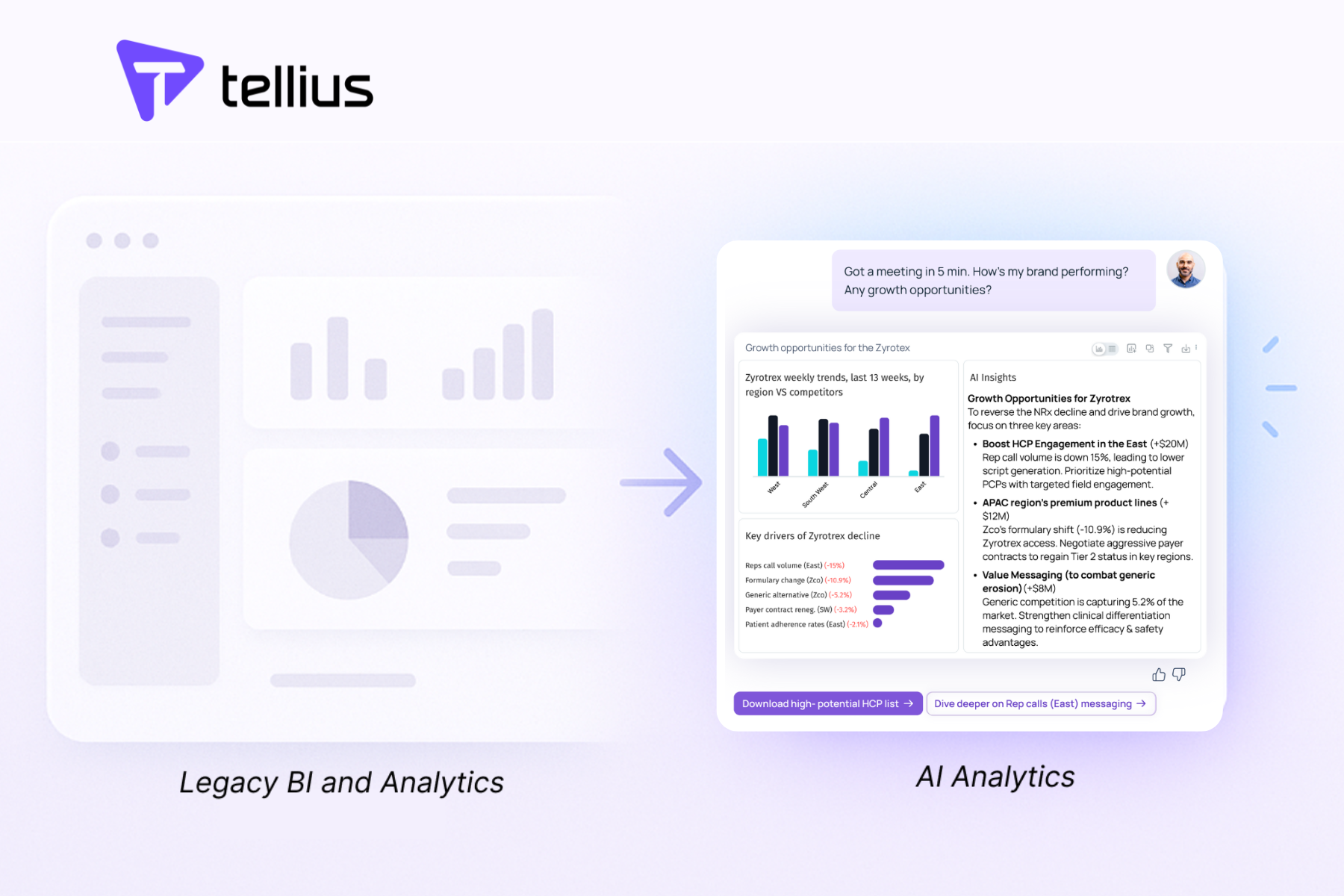Agentic Analytics Explained: From Questions to Autonomous Action
%20(2).jpg)
Dashboards aren’t dead…but today’s enterprises expect MUCH more of their data & analytics teams and self-service analytics tools in this AI era (thanks, ChatGPT!). Questions are harder, data is more complex, and previously unimaginable levels of speed, depth, and personalization are expected when it comes to data-driven answers and insights.
Meanwhile, most enterprises have legacy tools, are dabbling in new bolt-on AI features to these tools and/or exploring with homegrown text-to-SQL solutions, all of which fail to deliver on the expectation around AI-powered analytics.
What’s needed isn’t an AI bot that cranks out yet another dashboard to the existing sprawl—it’s agentic intelligence that understands context, reasons through data, and delivers insights proactively. And to achieve this, you need something fundamentally architected for analytic reasoning, exploration, and adaptability.
This is agentic analytics, and it’s the architecture Tellius was built to deliver.
What is Agentic Analytics?
Agentic analytics is a new approach to data analysis that leverages AI agents—intelligent, LLM-powered software—to not only answer business questions but actually reason through complex tasks, learn from each interaction, and take initiative.
This shift moves analytics from being reactive and static (and under water, frankly) to proactive, dynamic, and always-on. Rather than asking a question and waiting on a dashboard, agentic analytics is like having a team of AI analysts by your side continuously uncovering insights, testing hypotheses, and suggesting next-best actions. For example, instead of manually investigating a slowdown in Q3 sales, agents proactively analyze patterns and flag anomalies.
Why Agentic Analytics Is Gaining Momentum
%20(1).png)
Dashboard sprawl—the proliferation of infrequently used dashboards—is a real headache. Business leaders are inundated with dashboards and reports that don’t drive action, while data teams are bottlenecked answering slight variations of similar ad hoc questions week after week.
AI copilots like PowerBI Copilot make things a little easier, but they still rely on human direction and are just summarizing/visualizing things—rather than really analyzing, recommending, or being plugged into system for them to take action.
Agentic analytics is different. It doesn’t just generate responses. It orchestrates multi-step reasoning across workflows that traditionally took entire teams.
Agentic AI agents combine:
- The reasoning power of LLMs to understand goals, break them into steps, and generate contextual analysis.
- Enterprise-grade context-awareness, pulling from governed semantic layers and multiple data sources in real time.
- Memory and learnings, so agents improve continuously with usage, feedback, and correction.
- Action orchestration, triggering follow-up analyses, alerting stakeholders, or suggesting next-best actions.
Instead of chasing KPIs after the fact, businesses using agentic analytics get proactive answers before the next meeting—and automated recommendations when something deviates from plan.
This is more than faster insight. It’s a shift from reactive BI to continuous agentic intelligence—without the manual overhead.
Why Traditional Analytics Stacks Fall Short
Traditional analytics stacks fall short of today’s end user expectations for several reasons:
Comparing Agentic Analytics to BI, Search, and Copilots
Here’s how agentic analytics stacks up to previous approaches to data & analytics:
Agentic analytics adds autonomy for AI agents to decide what steps to take, what data to pull, how to analyze it, and how to act. It’s a multidimensional leap.
The 6 Pillars of Agentic Analytics Architecture
To move from dashboards to decision intelligence, the following components are critical:
1. Semantic Query Layer
To understand business questions, agents need a semantic layer that maps natural language to the actual, trusted metrics, dimensions, filters, and hierarchies in your data.
2. Multi-Agent Orchestration for Analytical Reasoning
Complex business problems don’t have one-step answers. They require a sequence of analyses—trends, comparisons, diagnoses, and explanations.
3. Root Cause & Driver Graph Reasoning
It's not enough to surface a trend. You need to understand what’s influencing it and how different variables interact.
4. Retrieval Intelligence Across Structured + Unstructured Data
Agents must draw on both structured metrics and unstructured content (like call notes or PDFs). This requires intelligent retrieval, not just querying tables.
5. Feedback-Driven Learning
Agentic Insights and answers must improve over time. Systems that don’t learn from user feedback repeat mistakes and stagnate.
6. Insight Narratives for Human-Centric Understanding
Dashboards and charts are not enough. Business users need to understand what changed, why it matters, and what to do next.
How Agentic Analytics Works (Under the Hood)
%20(1).png)
Agentic analytics platforms like Tellius combine several intelligent components that enable autonomous decision-making:
- AI Agents: LLM-powered agents can access data prep tools, generated automated insights, and trigger workflows—like identifying churn risk and alerting account owners—without manual setup.
- Orchestration Layer: Determines the optimal plan, agents, tools, semantic context, etc to fulfill a business goal (e.g., diagnose declining revenue and suggest corrective actions).
- Memory + Learnings: Stores implicit and explicit user preferences and recurring questions—so agents respond more accurately over time and reduce repetitive requests.
- Semantic Layer: Applies business context, metric definitions, and governance rules to ensure accurate, compliant, and explainable outputs—especially in regulated industries.
Together, these layers create an adaptive system that learns and evolves.
Ask a question once, and the next time the agent already knows your intent, the metrics you care about, and the output format you prefer.
Why Tellius Is Uniquely Fit for This Architecture
When you look at how Tellius is built, it becomes very clear we have all the pieces necessary make good on the promise of agentic analytics:
What Agentic Analytics Can Do (Real-World Use Cases)
Agentic analytics isn’t just a better UI. It’s a fundamentally smarter system for driving real business outcomes. Some examples:
Sales & Commercial Operations
Instead of waiting for quarterly performance reviews, AI agents proactively monitor rep activity, territory performance, and win/loss signals—and suggest coaching opportunities or reallocations.
Category Management (CPG)
Rather than manually reviewing pricing and promotional performance, agents simulate scenarios, detect cannibalization trends, and recommend SKU-level changes to maximize margin.
Market Access & Pharma
AI agents connect claims data, formulary access, and NBRx trends to spot underperformance by payer, suggest pull-through strategies, and flag prior authorization issues before they cascade.
Addressing Common Concerns
Every new tech comes with risks. Agentic analytics addresses them head-on:
%20(1).png)
- Hallucinations: Use of Retrieval-Augmented Generation (RAG) and semantic layers ensures agents reference truth, not guesses.
- Loss of control: Agents operate within scoped workflows, with human-in-the-loop feedback and override.
- User trust: Continuous learning improves responses, while transparent explanations build confidence.
- Analyst replacement fear: Agents eliminate repetitive tasks—not strategic thinking. Human expertise remains central.
- Overhyped GenAI?: GenAI copilots need prompts. Agentic analytics executes based on intent—no hand-holding required.
The difference? These are manageable risks—with massive upside.
Agentic Analytics Is Not a Feature. It’s a New Foundation.
The next era of analytics is goal-driven, adaptive, and intelligent.
Tellius brings this to life by combining deep analytics with conversational intelligence, multi-agent reasoning, and business-aware feedback loops. It’s not about replacing analysts—it’s about scaling intelligence across your business with a system that gets smarter every day.
TL;DR: Key Takeaways
- Agentic analytics uses autonomous AI agents to handle multi-step analysis and decision workflows.
- It represents a major evolution from static BI, search tools, and copilots.
- Agents can pull from multiple systems, reason through steps, and act—not just answer.
- Business and technical teams alike benefit from faster time to insight, fewer bottlenecks, and better decisions.
- Tellius is the first analytics platform designed from the ground up to enable agentic workflows.
The era of asking questions is evolving. With agentic analytics, you can move beyond this to action.
Want to see it in action? Schedule a demo.
Get release updates delivered straight to your inbox.
No spam—we hate it as much as you do!


AI Agents: Transforming Data Analytics Through Agentic AI

AI agents aren’t just hype—they’re the engine behind the next generation of self-service analytics. This post breaks down how agentic AI enables multi-step, contextual analysis workflows that automate the grunt work of business intelligence. Learn what makes agentic systems different, what to look for in a true AI-native platform, and how Tellius is pioneering this transformation.

Augmented Analytics: How AI is Transforming BI to Keep Pace With Complex Data

Augmented analytics is transforming business intelligence (BI) by combining artificial intelligence (AI) and machine learning to automate complex data analysis tasks. This innovation empowers businesses to quickly uncover deeper insights, simplify data exploration, and accelerate decision-making, making advanced analytics accessible to all users, regardless of technical expertise.

Why Agentic Intelligence Is the Future of AI Analytics in 2025 and Beyond

AI analytics has evolved from dashboards and copilot tools to agentic intelligence Business users now get autonomous recommendations, not just answers Platforms like Tellius combine conversational AI, agent orchestration, and memory The result: faster insights, better decisions, and less dependency on data teams. In 2025, AI analytics isn’t a feature. It’s a fundamental shift in how decisions get made.

